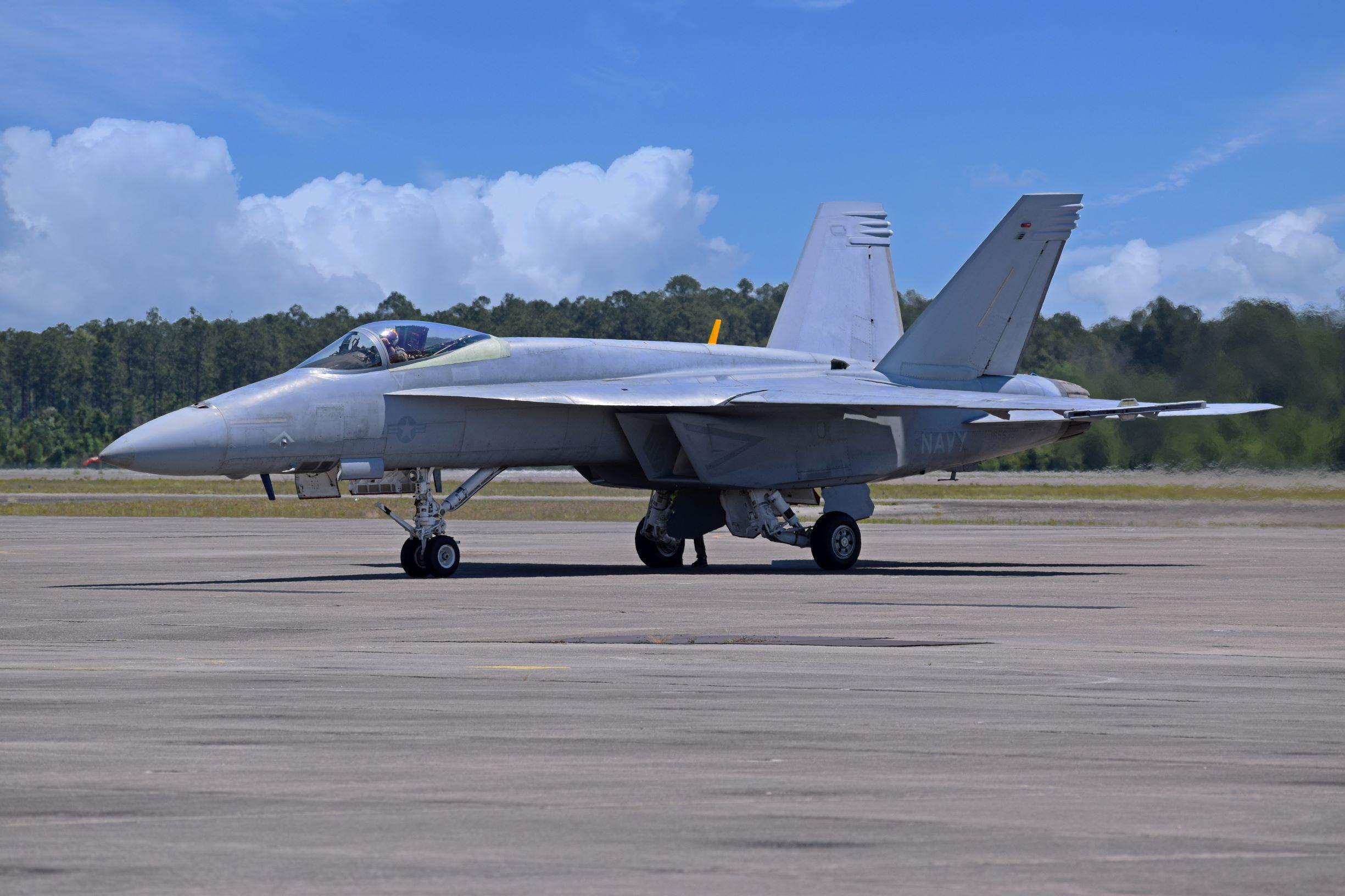
The U.S. Navy’s Blue Angels have received their first Super Hornet aircraft, which will undergo flight testing and evaluation at Naval Air Station Patuxent River in Maryland.
This is the first of 11 Super Hornets that the aerobatic display team expects to receive in 2020. Nine will be E models and two will be F models, says Pat Walsh, vice president for U.S. Navy and Marine Corps Services for Boeing and a former Blue Angels pilot from 1985-87.
The aircraft will replace the Blue Angels’ F/A-18A-D Hornets that have been in service since 1987.
Boeing’s Cecil Field facility in Jacksonville, Florida, modify regular F/A-18 Hornets and Super Hornets for the Blue Angels.
The modification involves adding a smoke-generation system by removing the gun in the nose and replacing it with an oil tank with lines to the engines, says Walsh. “When the heat hits the oil associated with the smoke oil, that’s what generates the smoke that you see from the ground,” he says.
The windscreens and canopy also “need to be clear to avoid electrostatic charges that come off of some of the coatings that the fleet uses,” says Walsh.
Some minor radome modifications also are made to allow for oil drainage, and the fuel tanks have motors and pumps installed that allows aircraft to fly inverted for an extended time.
“There is also work being done to integrate the artificial feel system,” which essentially adds a spring coming up from the floorboard and attaching to the stick to help pilots fly aircraft in close proximity during formation, he says.
The mod also includes a civilian navigation system so pilots have access to civilian instrument landing systems.
Boeing is modifying the second aircraft that it plans to deliver to the Navy before the end of this month. Each takes “a few months,” with efficiencies gained as the program progresses, says the former Blue Angels pilot. The program cost wasn’t revealed.
The Blue Angels’ Block 1 Super Hornets will essentially follow the same maintenance requirements as their Navy counterparts, with the exception being the modifications’ requirements.
Despite the Super Hornets being about one-third larger than its predecessors, Walsh says its turning radius is tighter and thinks it will be in front of crowds more often because “it can maneuver in tight formations due to strong engines and do more work in the vertical.”
The Navy’s Fleet Readiness Center Southeast in Jacksonville, Florida, will paint the aircraft blue and yellow.
The Blue Angels starting flying Boeing F-4J Phantom II in 1969, then switched to the A-4F Skyhawks, before transitioning to the Hornets.






Comments